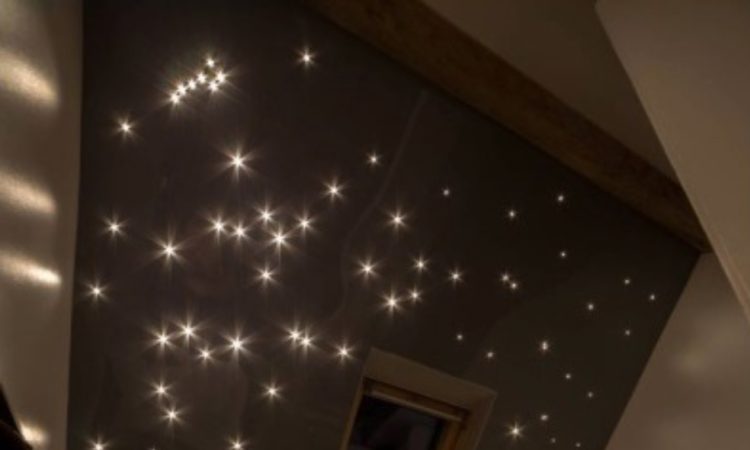
In the realm of lighting technology, few innovations have captured the imagination and versatility of LED light strips. These sleek, energy-efficient, and multi-functional lighting solutions have not only revolutionized interior and exterior design but have also found applications in various industries, from entertainment to automotive. This article delves into the evolution, features, applications, and benefits of LED light strips, showcasing their transformative impact on lighting design and beyond.
Evolution of LED Light Strips: From Niche to Mainstream
The journey of LED light strips began with the development of light-emitting diodes (LEDs) in the 1960s. These tiny, energy-efficient light sources emitted light when an electric current passed through them, a stark contrast to traditional incandescent and fluorescent lighting technologies. However, it wasn’t until advancements in LED technology in the 21st century that these diodes could be harnessed effectively for lighting applications.
Early LED light strips were simple, often rigid and single-colored. However, as LED technology improved and became more cost-effective, manufacturers began to experiment with flexible strips that could emit a range of colors. The integration of RGB (red, green, blue) LEDs allowed for a vast spectrum of colors to be produced from a single strip, paving the way for customizable and dynamic lighting effects.
Features and Components
Modern LED light strips are a testament to innovation in design and engineering. They consist of several key components:
- LED Chips: The heart of any LED light strip, these chips emit light when an electric current flows through them. RGB or RGBW (red, green, blue, white) configurations allow for a wide variety of color options.
- Circuit Board: The LED chips are mounted on a flexible or rigid circuit board, depending on the desired application and flexibility of the strip.
- Encapsulation: A protective layer covers the LED chips, shielding them from environmental factors and providing uniform light diffusion.
- Control Module: Many LED light strips come with a control module, enabling users to adjust brightness, color, and even create dynamic lighting effects. This can be done through remote controls, mobile apps, or integrated systems.
- Adhesive Backing: A peel-and-stick adhesive backing allows easy installation on various surfaces, making LED light strips a versatile and user-friendly lighting solution.
- Power Supply: LED light strips require a power supply to function. Depending on the length and power requirements of the strip, this could be a plug-in adapter or a direct wiring setup.
Applications and Versatility
The versatility of LED light strips is a key factor in their widespread adoption across various industries:
- Interior Design: LED light strips have transformed interior spaces, offering ambient lighting, accentuation of architectural features, and creative backlighting options. They can be used under cabinets, along shelves, or even embedded in furniture to add a touch of elegance and ambiance.
- Entertainment: The entertainment industry has embraced LED light strips for stage lighting, creating captivating visual effects during concerts, theater productions, and events. They can be synchronized with music or programmed for dynamic color changes.
- Automotive: Automotive enthusiasts have incorporated LED light strips into cars for both functional and aesthetic purposes. They enhance visibility and safety by acting as daytime running lights, brake lights, and turn signals, while also adding a unique flair to the vehicle’s appearance.
- Exterior Lighting: LED light strips are increasingly used for architectural lighting on buildings and landmarks. They can accentuate the contours of structures, creating striking visuals that change the night skyline.
- Commercial Spaces: Retailers and businesses employ LED light strips to attract attention, guide customers, and enhance the overall shopping experience. Restaurants and cafes use them to create cozy atmospheres, while offices incorporate them for modern and energy-efficient lighting solutions.
- Home Automation: LED light strips can be integrated into smart home systems, allowing users to control their lighting remotely through voice commands or mobile apps. This adds an extra layer of convenience and customization to everyday living.
Benefits of LED Light Strips
The adoption of LED light strips is driven by a multitude of advantages they offer:
- Energy Efficiency: LED technology is highly energy-efficient, consuming significantly less power than traditional lighting options. This leads to reduced energy consumption and lower utility bills.
- Longevity: LED light strips have an impressive lifespan, often lasting tens of thousands of hours. This longevity reduces maintenance and replacement costs over time.
- Flexibility: Flexible LED light strips can be bent and shaped around curves, corners, and irregular surfaces, enabling creative and intricate lighting designs.
- Color Customization: With RGB and RGBW configurations, LED light strips offer endless color possibilities, allowing users to match lighting with mood, theme, or design.
- Cool Operation: Unlike incandescent bulbs, LED light strips emit very little heat, making them safe to touch and reducing the risk of fire hazards.
- Environmentally Friendly: LED technology is mercury-free and produces fewer carbon emissions, contributing to a greener environment.
Future Innovations
As technology continues to advance, the future of LED light strips holds even more promise. Researchers are exploring ways to enhance the efficiency of LED chips, extend their lifespan, and introduce more intricate color-changing capabilities. Integration with smart home systems is also expected to become more seamless, allowing users to further personalize their lighting experiences.
In conclusion, LED light strips have emerged as a transformative lighting solution that has transcended industries and applications. Their evolution from rudimentary single-colored rigid strips to versatile, dynamic, and energy-efficient lighting options reflects the rapid pace of technological advancement. As they continue to shape the way we illuminate spaces, it’s evident that LED light strips have illuminated not only our environments but also our imagination and innovation.







